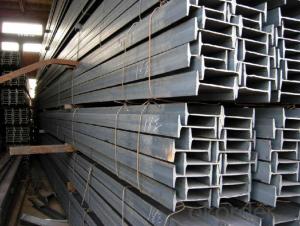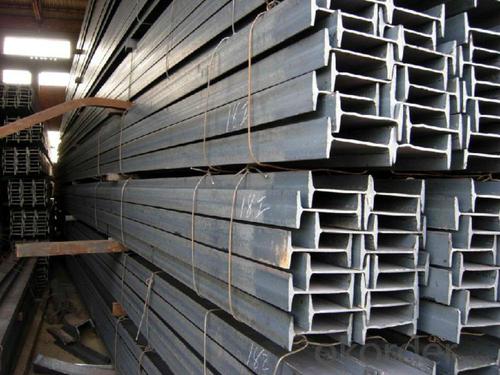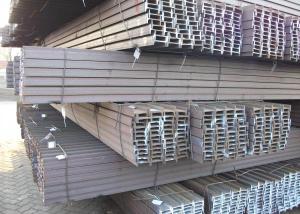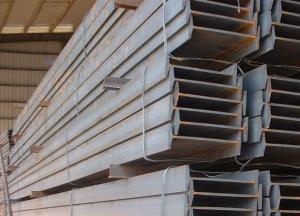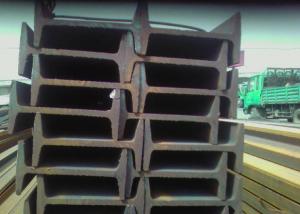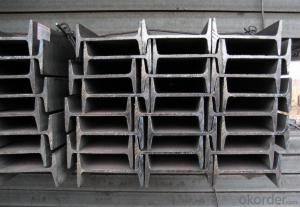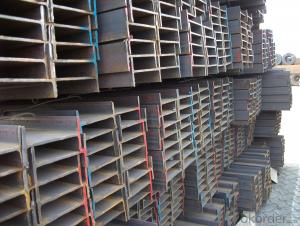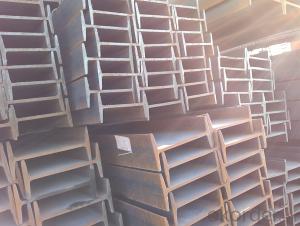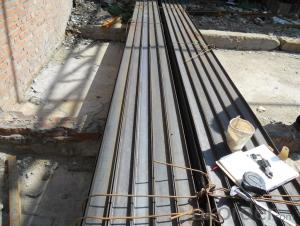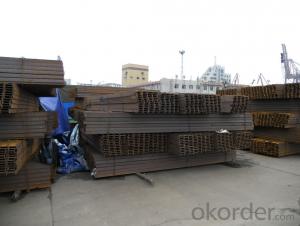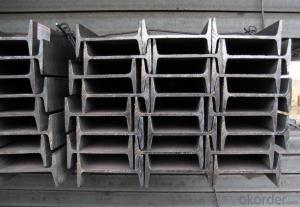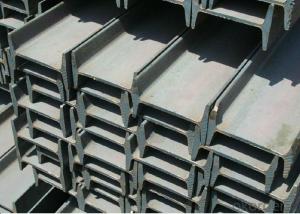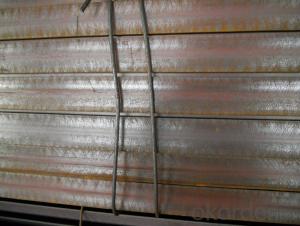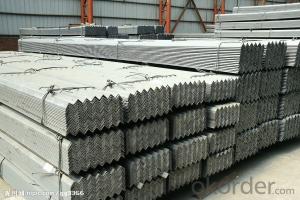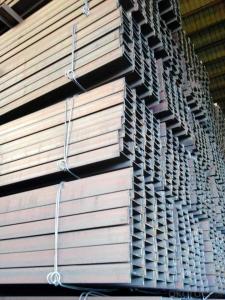Hot Rolled Steel I-Beams Source from China
- Loading Port:
- Tianjin
- Payment Terms:
- TT OR LC
- Min Order Qty:
- 25 m.t
- Supply Capability:
- 10000 m.t/month
OKorder Service Pledge
OKorder Financial Service
You Might Also Like
Specification
OKorder is offering high quality Hot Rolled Steel I-Beams at great prices with worldwide shipping. Our supplier is a world-class manufacturer of steel, with our products utilized the world over. OKorder annually supplies products to European, North American and Asian markets. We provide quotations within 24 hours of receiving an inquiry and guarantee competitive prices.
Product Applications:
IPE/IPEAA Beam Steel are widely used in various construction structures, bridges, autos, brackets, mechanisms and so on.
Product Advantages:
OKorder's Steel I-Beams are durable, strong, and resist corrosion.
Main Product Features:
· Premium quality
· Prompt delivery & seaworthy packing (30 days after receiving deposit)
· Corrosion resistance
· Can be recycled and reused
· Mill test certification
· Professional Service
· Competitive pricing
Product Specifications:
1. Product name: IPE/IPEAA Beam Steel
2. Standard: EN10025, GB Standard, ASTM, JIS etc.
3. Grade: Q235B, A36, S235JR, Q345, SS400 or other equivalent.
4. Length: 5.8M, 6M, 9M, 10M, 12M or as your requirements
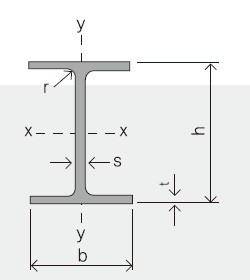
Section | Standard Sectional Dimensions(mm) | ||||
h | b | s | t | Mass Kg/m | |
IPE80 | 80 | 46 | 3.80 | 5.20 | 6.00 |
IPE100 | 100 | 55 | 4.10 | 5.70 | 8.10 |
IPE120 | 120 | 64 | 4.80 | 6.30 | 10.40 |
IPE140 | 140 | 73 | 4.70 | 6.90 | 12.90 |
IPE160 | 160 | 82 | 5.00 | 7.40 | 15.80 |
IPE180 | 180 | 91 | 5.30 | 8.00 | 18.80 |
IPE200 | 200 | 100 | 5.60 | 8.50 | 22.40 |
IPE220 | 220 | 110 | 5.90 | 9.20 | 26.20 |
IPE240 | 240 | 120 | 6.20 | 9.80 | 30.70 |
IPE270 | 270 | 135 | 6.60 | 10.20 | 36.10 |
IPEAA80 | 80 | 46 | 3.20 | 4.20 | 4.95 |
IPEAA100 | 100 | 55 | 3.60 | 4.50 | 6.72 |
IPEAA120 | 120 | 64 | 3.80 | 4.80 | 8.36 |
IPEAA140 | 140 | 73 | 3.80 | 5.20 | 10.05 |
IPEAA160 | 160 | 82 | 4.00 | 5.60 | 12.31 |
IPEAA180 | 180 | 91 | 4.30 | 6.50 | 15.40 |
IPEAA200 | 200 | 100 | 4.50 | 6.70 | 17.95 |
5.Color marking: There will be color marking on both end of the bundle for the cargo delivered by bulk vessel. That makes it easily to distinguish at the destination port.
Tag mark: there will be tag mark tied up on the bundles. The information usually including supplier logo and name, product name, made in China, shipping marks and other information request by the customer.
If loading by container the marking is not needed, but we will prepare it as customer request.
6. Shipment: In containers or in bulk cargo
FAQ:
Q1: Why buy Materials & Equipment from OKorder.com?
A1: All products are carefully selected from China's most reliable manufacturing enterprises. Through its ISO certifications, OKorder.com adheres to the highest standards and a commitment to supply chain safety and customer satisfaction. We can guarantee the quality!
Q2: The products are invoicing on theoretical weight or on actual weight?
A2: We can do it in both manners, it’s according to buyer's requirement.
Q3: Can you offer the third part inspection certificates ?
A3: Yes, we can apply third part inspection before shipping, such as SGS, BV, etc .
Images:
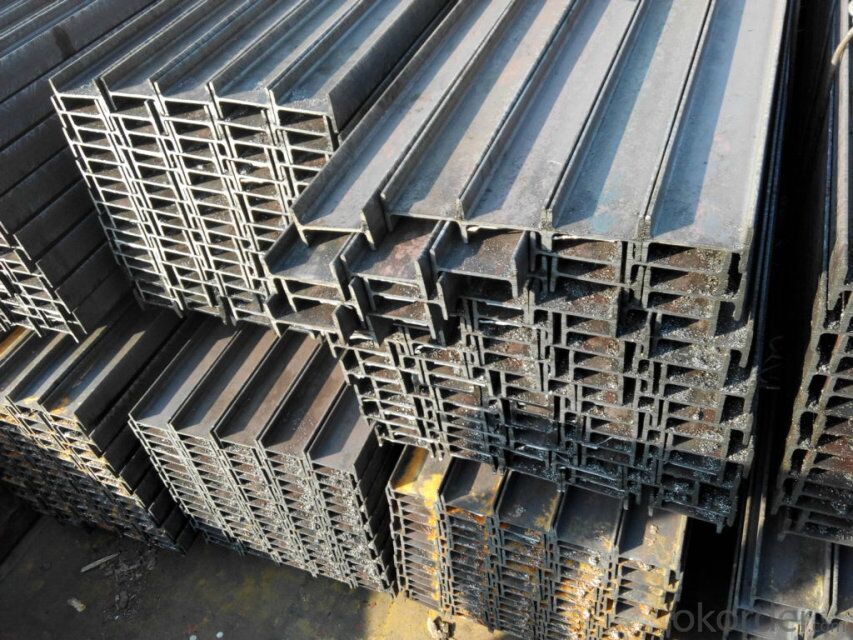
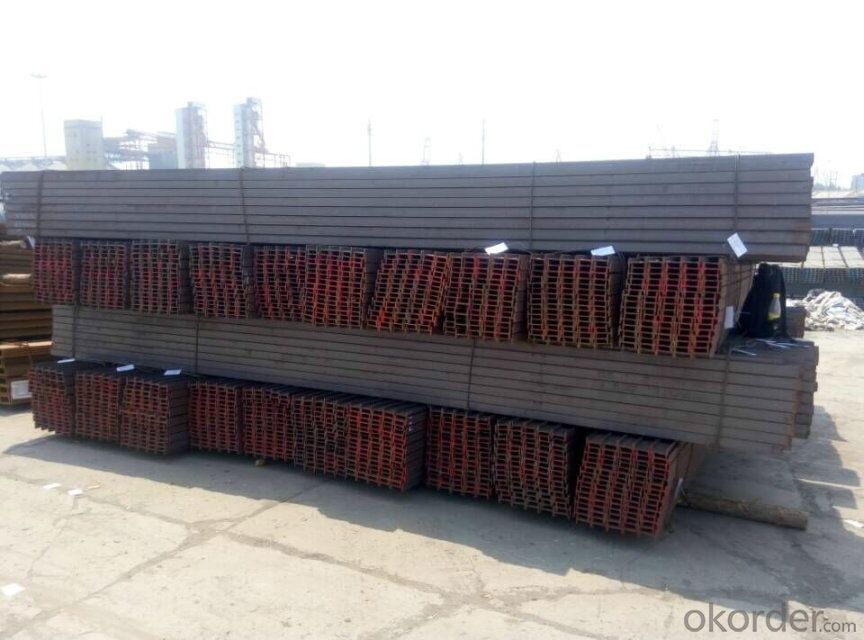
- Q: How do steel I-beams resist deflection?
- Steel I-beams resist deflection through their structural design and material properties. The shape of an I-beam, with its wide flanges and narrow web, provides a high moment of inertia, which is the resistance to bending. This shape allows the I-beam to distribute the load evenly across its cross-section, minimizing deflection. The flanges are placed at the top and bottom of the beam, where most of the bending stresses occur, while the web connects them, providing stability and resistance against twisting or buckling. Moreover, steel, as a material, has excellent strength and stiffness properties. It has a high elastic modulus, which means it can withstand large amounts of stress before permanently deforming. This property enables the I-beam to resist deflection under heavy loads. Additionally, steel has a high yield strength, which is the point at which it starts to deform plastically. This allows the I-beam to handle even higher loads before failure. To further enhance the resistance to deflection, I-beams can be designed with additional reinforcement such as stiffeners or bracing, which provide extra support and rigidity. These reinforcements effectively reduce the deflection by increasing the overall stiffness of the beam. In summary, steel I-beams resist deflection due to their shape, which provides a high moment of inertia and even load distribution, and steel's inherent strength and stiffness properties. By combining these factors, I-beams are able to withstand heavy loads while maintaining minimal deflection.
- Q: How do steel I-beams perform in terms of acoustic insulation?
- Acoustic insulation is not a strong suit for steel I-beams due to their high conductivity, enabling easy passage of sound waves. Unlike wood or concrete, steel I-beams lack the capacity to absorb or diminish sound waves. Consequently, steel I-beams are not an effective option for soundproofing or minimizing noise transmission. To achieve better acoustic insulation, alternative materials or construction methods should be explored.
- Q: What are the common methods of installing steel I-beams in residential homes?
- There are several common methods of installing steel I-beams in residential homes. One of the most common methods is known as the direct bolted method. In this method, the I-beam is positioned and aligned in its desired location, and then it is secured using high-strength bolts that are drilled and bolted directly into the supporting structure. This method provides a strong and secure connection between the I-beam and the surrounding structure. Another common method is the steel plate method. In this method, steel plates are welded to both ends of the I-beam, and these plates are then bolted or welded to the supporting structure. This method allows for a larger surface area to distribute the load and provides additional strength and stability to the installation. A third method is the timber post method. This method involves using timber posts as support for the I-beam. The I-beam is placed on top of the timber posts, and then it is bolted or welded in place. This method is often used when the I-beam needs to be installed in an existing structure where there is limited access or space. Lastly, there is the concrete pier method. This method involves creating concrete piers or footings to support the I-beam. The I-beam is then placed on top of the piers and secured using bolts or welding. This method is commonly used when the I-beam needs to be installed in areas with high load-bearing requirements or where the soil conditions are not suitable for other installation methods. It is important to note that the specific method used for installing steel I-beams in residential homes may vary depending on the structural requirements, local building codes, and the expertise of the contractor or engineer overseeing the installation. It is always recommended to consult with a professional to determine the most appropriate method for your specific project.
- Q: How do engineers determine the appropriate size of steel I-beams for a specific application?
- Engineers determine the appropriate size of steel I-beams for a specific application by considering various factors such as the load requirements, span length, and the type of structure. They use structural analysis techniques and mathematical calculations to determine the maximum bending moment, shear force, and deflection that the I-beam will experience. By evaluating these factors, engineers can select an I-beam size that can safely support the load and meet the structural and safety requirements of the application.
- Q: How do steel I-beams compare to fiberglass I-beams in terms of strength and durability?
- Steel I-beams are generally considered to be stronger and more durable than fiberglass I-beams. Steel is a much stronger material compared to fiberglass, which means that steel I-beams can bear heavier loads and withstand more stress without deforming or breaking. Additionally, steel has a higher resistance to fire, extreme temperatures, and chemicals, which further enhances its durability. Fiberglass I-beams, on the other hand, are lighter and more flexible than steel I-beams. This makes them suitable for certain applications where weight is a concern or where flexibility is required. Fiberglass I-beams also have excellent corrosion resistance, making them ideal for environments that are exposed to chemicals or moisture. While fiberglass I-beams can be a cost-effective and corrosion-resistant alternative to steel in certain situations, they cannot match the strength and durability of steel I-beams in heavy-duty applications. Steel I-beams are commonly used in construction projects that require high load-bearing capacities, such as skyscrapers, bridges, and industrial buildings. In these scenarios, the superior strength and durability of steel make it the preferred choice.
- Q: Can steel I-beams be used in curved structures?
- Yes, steel I-beams can be used in curved structures. While I-beams are typically used in straight applications, they can also be curved to fit the design requirements of a curved structure. This process involves a technique known as cold-bending, where the I-beam is gradually curved to the desired shape using specialized machinery. Cold-bending allows the steel I-beams to be formed into various radii and curves, making them suitable for use in curved structures such as arches, domes, and curved roofs. It is important to note that the bending process may cause some deformation or distortion in the I-beam's cross-section, but this can be mitigated by using proper techniques and ensuring the structural integrity of the curved steel I-beams.
- Q: How are steel I-beams protected against rust?
- Steel I-beams are typically protected against rust through a process called galvanization. This involves coating the beams with a layer of zinc, which acts as a barrier against moisture and oxygen, preventing rust from forming. Additionally, some I-beams may also be painted or coated with epoxy for further protection.
- Q: Can steel I-beams be used for food processing plants?
- Yes, steel I-beams can be used for food processing plants. Steel I-beams are commonly used in construction for their strength, durability, and load-bearing capabilities. These properties make them suitable for supporting heavy equipment, machinery, and structures in food processing plants. Additionally, steel I-beams are resistant to corrosion, which is important in environments where food safety and hygiene are paramount. They can also be easily cleaned and maintained, ensuring a safe and sanitary processing environment. Overall, steel I-beams are a popular choice in the construction of food processing plants due to their strength, durability, and suitability for the specific requirements of the industry.
- Q: How do you calculate the deflection due to bending in a steel I-beam?
- To calculate the deflection due to bending in a steel I-beam, you can use the Euler-Bernoulli beam theory. This theory assumes that the beam is long and slender, with a small amount of deflection compared to its length. The first step in calculating the deflection is determining the bending moment at the point of interest in the beam. This can be done by analyzing the external loads and supports applied to the beam. Once the bending moment is determined, you can use the formula: δ = (5 * M * L^3) / (384 * E * I) where δ is the deflection, M is the bending moment, L is the length of the beam, E is the modulus of elasticity of the steel, and I is the moment of inertia of the beam's cross-sectional shape. The moment of inertia (I) is a measure of the beam's resistance to bending and can be calculated based on the beam's cross-sectional dimensions. For an I-beam, it is typically given by: I = (b * h^3 - b' * h'^3) / 12 where b and h represent the dimensions of the top and bottom flanges, and b' and h' represent the dimensions of the web. The modulus of elasticity (E) is a material property of steel and can be obtained from engineering references or material data sheets. By plugging in the values for the bending moment, length, modulus of elasticity, and moment of inertia into the deflection formula, you can calculate the deflection due to bending in a steel I-beam. It is important to note that this formula assumes linear elastic behavior and neglects factors such as shear deformation and non-linear material properties that may affect the actual deflection.
- Q: Can steel I-beams be used for staircases or ramps?
- Indeed, staircases or ramps can utilize steel I-beams. Construction frequently employs steel I-beams given their robustness and endurance. In the case of staircases, I-beams can be horizontally positioned to fashion the steps, thus establishing a sturdy and secure framework. Similarly, for ramps, I-beams can be employed to establish an inclined surface that facilitates effortless accessibility. The durability of steel I-beams guarantees that the staircase or ramp can bear the weight of individuals utilizing them. Moreover, steel I-beams can be tailored to various dimensions and configurations, thereby allowing for flexibility in the design and construction of staircases and ramps.
Send your message to us
Hot Rolled Steel I-Beams Source from China
- Loading Port:
- Tianjin
- Payment Terms:
- TT OR LC
- Min Order Qty:
- 25 m.t
- Supply Capability:
- 10000 m.t/month
OKorder Service Pledge
OKorder Financial Service
Similar products
Hot products
Hot Searches
Related keywords
